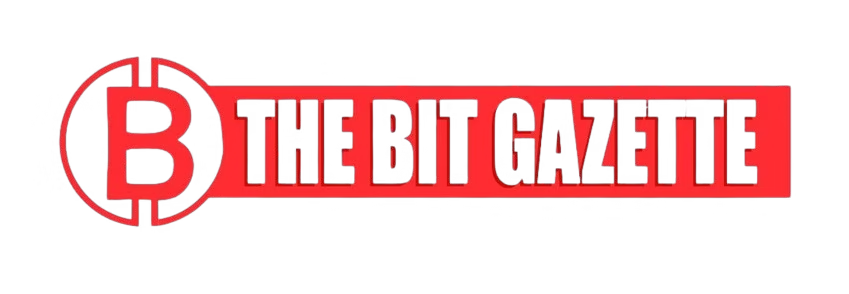U.S. spot Bitcoin ETFs experienced more than $1.2 billion in total outflows this week, signaling renewed volatility in institutional exposure to digital assets. The move coincided with Bitcoin’s sharp price decline of over $10,000, from just above $115,000 on Monday to a four-month low below $104,000 by Friday.
According to data from SoSoValue, the eleven active spot Bitcoin ETFs collectively lost $366.6 million on Friday alone capping off five consecutive days of withdrawals. BlackRock’s iShares Bitcoin Trust (IBIT) accounted for the largest share of the retreat, bleeding $268.6 million.
Fidelity’s Wise Origin fund saw $67.2 million in redemptions, while Grayscale’s GBTC recorded $25 million in net outflows. Valkyrie’s fund also saw minor losses, with other issuers showing flat activity.
The cumulative $1.22 billion outflow represents one of the most significant weekly retracements since the products launched in January. Analysts note that macroeconomic pressures, including U.S. Treasury yield spikes and uncertainty over Federal Reserve policy, likely contributed to short-term risk aversion.
This is a classic liquidity reaction, said Michael O’Rourke, Chief Market Strategist at JonesTrading. When macro risk intensifies, even high-performing instruments like spot Bitcoin ETFs face profit-taking from institutions.
Schwab highlights rising crypto engagement despite red week
While funds withdrew from spot Bitcoin ETFs, traditional finance players appear increasingly interested in the underlying products. Charles Schwab CEO Rick Wurster said on CNBC that the brokerage’s clients now own roughly 20% of all crypto exchange-traded products (ETPs) in the United States as a figure reflecting deepening adoption among mainstream investors.
Crypto ETPs have been very active, Wurster said, emphasizing that visits to Schwab’s digital asset site have surged 90% over the past year. It’s a topic that’s of high engagement.
Industry analysts interpret Schwab’s growing presence as a sign of normalization within regulated crypto finance. Schwab entering the conversation changes the psychology, said Nate Geraci, President of The ETF Store. They bring scale, compliance, and the kind of investor confidence Bitcoin ETFs need.
Schwab already offers Bitcoin futures and crypto-themed ETFs and plans to launch spot crypto trading for its clients in 2026, pending regulatory clarity. Its involvement reinforces the gradual convergence of traditional brokerage infrastructure and blockchain-based investment instruments.
Bitcoin’s price drop and historical October pattern
Bitcoin’s price correction has amplified the impact on spot Bitcoin ETFs, as redemptions typically rise in response to short-term volatility. Historically, October nicknamed “Uptober” by traders has produced positive monthly returns for Bitcoin in ten of the past twelve years.
However, this October has diverged sharply from that trend. According to CoinGlass, Bitcoin has fallen approximately 6% this month, reversing the optimism that characterized previous years.
Still, analysts remain cautiously optimistic. “Uptober isn’t canceled yet,” said Antoni Trenchev, co-founder of Nexo. “Historically, Bitcoin’s strongest October gains occur in the second half of the month, often following macro catalysts like Federal Reserve policy shifts.”
Market watchers also point to potential Federal Reserve interest rate cuts as a future boost to digital assets, particularly as lower yields could revive appetite for alternative and risk-on investments like spot Bitcoin ETFs.
Institutional signals and long-term outlook
While short-term outflows dominate headlines, several analysts emphasize that institutional interest in spot Bitcoin ETFs remains structurally strong. According to data compiled by the Securities and Exchange Commission (SEC), the U.S. market has seen steady growth in ETF assets under management, even amid cyclical pullbacks.
Volatility is inherent to crypto-linked products, said Samir Tabar, CEO of Bit Digital. What matters more is long-term allocation behavior, and there’s no sign that large institutions are abandoning exposure altogether.
The spot Bitcoin ETF framework approved by the SEC earlier this year allows asset managers to hold physical Bitcoin as underlying collateral rather than synthetic derivatives. This structural design was intended to improve transparency and investor protection under federal securities laws.
In addition, regulated custodians like Coinbase Custody Trust and Fidelity Digital Assets provide cold storage for ETF holdings, ensuring compliance with the Investment Company Act of 1940 and related frameworks.
As markets stabilize, analysts expect renewed inflows into spot Bitcoin ETFs particularly if macroeconomic conditions ease and Bitcoin rebounds toward prior highs. Once price momentum returns, ETF participation tends to recover quickly, said Geraci. Investors are learning to treat these drawdowns as part of a maturing cycle.











